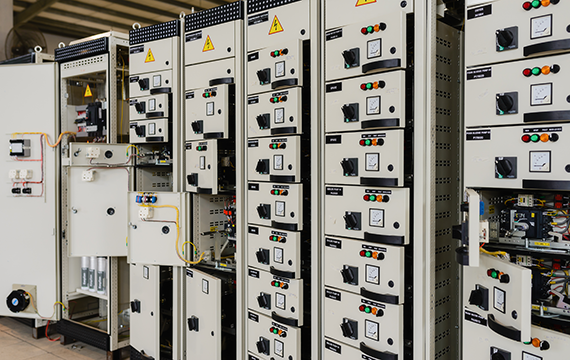Different Types of Vacuum Circuit Breakers
Introduction
What is a VCB?
A Vacuum Circuit Breaker (VCB) is an electrical switching device that uses a vacuum as the arc quenching medium. Unlike older technologies that rely on oil or gas, VCBs interrupt electric currents by opening a pair of contacts inside a vacuum-sealed chamber called a vacuum interrupter. This method prevents the formation of a sustained electrical arc, ensuring rapid and safe interruption of current, especially under fault conditions.
Why Use VCBs?
VCBs have become the standard for medium-voltage applications for good reason. They offer significant advantages over alternatives like Oil circuit breakers and SF6 circuit breakers. VCBs are highly reliable and require minimal maintenance because their contacts are sealed and protected from the environment. They are also non-polluting, as they don’t use harmful gases or oils, making them an environmentally friendly choice.
Classification by Installation Location
VCBs can be categorized based on where they are installed. This classification primarily affects their housing and environmental protection features.
Indoor Vacuum Circuit Breakers
Indoor VCBs are designed for use within protective enclosures, such as switchgear panels and metal-clad switchgear. They are typically found in industrial facilities, commercial buildings, and substations where they are shielded from the elements. Their compact design is ideal for spaces where footprint is a concern.
Outdoor Vacuum Circuit Breakers
Outdoor VCBs are built to withstand harsh weather conditions. They feature robust, weather-resistant enclosures to protect the internal components from rain, sun, dust, and extreme temperatures. These breakers are essential for outdoor substations and distribution networks where they are exposed to the environment.
Classification by Voltage Level
The voltage level is a critical factor that dictates the design and insulation of the VCB.
Medium-Voltage Vacuum Circuit Breakers
Medium-Voltage VCBs are the most common type, operating in the range of 1 kV to 36 kV. They are the workhorses of power distribution, protecting industrial and utility networks. Their reliability and low maintenance make them the preferred choice for factories, public utilities, and commercial complexes.
High-Voltage Vacuum Circuit Breakers
While historically dominated by SF6 technology, High-Voltage VCBs (above 72.5 kV) are an emerging field. The challenges of insulating and interrupting high voltages in a vacuum are significant, requiring advanced interrupter designs. These breakers are used in main transmission substations and large-scale power generation facilities.
Classification by Operating Mechanism
The operating mechanism is the system that physically opens and closes the VCB’s contacts.
Spring-Operated VCBs
Spring-operated VCBs are the most widely used type. They store mechanical energy in a compressed spring, which is then released to rapidly move the contacts. This mechanism is reliable, simple, and cost-effective, providing a consistent and fast operation.
Magnetic Actuator VCBs
Magnetic actuator VCBs use an electromagnet to control the contact movement. The mechanism is electronically controlled and has fewer moving parts than a spring-based system, leading to a much longer mechanical life and even faster operation. This type is favored in applications requiring a very high number of switching cycles.
Classification by Interrupter Design
The internal design of the vacuum interrupter is crucial for its ability to handle different fault currents.
Axial Magnetic Field VCBs
In Axial Magnetic Field VCBs, a magnetic field is generated parallel to the arc. This field spreads the arc across the contact surface, preventing it from concentrating in one spot. This design is highly effective for quenching arcs with high short-circuit currents.
Radial Magnetic Field VCBs
Radial Magnetic Field VCBs use a magnetic field that is perpendicular to the arc. This field causes the arc to rotate around the contacts, preventing it from overheating a single point. This design is generally more suited for lower short-circuit currents.
VCBs vs. Other Circuit Breaker Types
When choosing a circuit breaker, it’s helpful to understand the pros and cons of each type.
| Feature | Vacuum Circuit Breaker (VCB) | SF6 Circuit Breaker | Oil Circuit Breaker |
| Arc Quenching Medium | Vacuum | SF6 Gas | Transformer Oil |
| Maintenance | Very Low | Low | High |
| Environmental Impact | None | Potential for greenhouse gas leakage | Potential for oil spills and fire |
| Size | Compact | Larger | Bulky |
| Primary Use | Medium Voltage | High Voltage | Older, being phased out |
How to Choose the Right VCB for Your Application
Selecting the right VCB is a critical decision for ensuring the safety and reliability of your electrical system. Consider these factors:
- Voltage Level and Current Rating: Ensure the VCB matches your system’s voltage and can handle the maximum fault current.
- Installation Environment: Choose an Indoor or Outdoor VCB based on where it will be placed.
- Operating Speed and Longevity: Decide if you need a standard Spring-operated VCB or a faster, more durable Magnetic actuator model.
- Application-Specific Needs: Consult with an expert to match the interrupter design (e.g., Axial or Radial magnetic field) to your specific load requirements.
Conclusion
Vacuum Circuit Breakers have revolutionized circuit protection with their safety, reliability, and environmental benefits. By understanding the different types and classifications—from Indoor to Outdoor and Medium-Voltage to High-Voltage—you can make an informed decision for your specific needs.
At BYYOU, we specialize in providing a comprehensive range of high-quality vacuum circuit breakers for all applications. Whether you need a robust solution for an outdoor substation or a compact model for an industrial panel, we have the right product for you. Contact us today to learn more about our offerings and find the perfect circuit protection solution.








